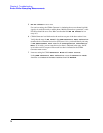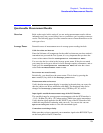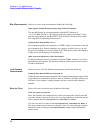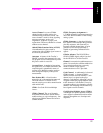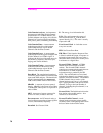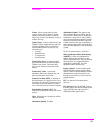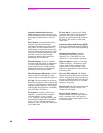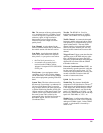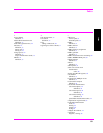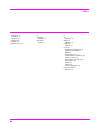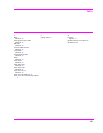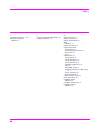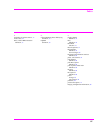
Glossary
80
Personal Communication Services
(PCS) Emerging wireless networks using
digital modulation formats and operating in
the frequency band between 1.8 and 2.4
GHz.
Pilot Channel An unmodulated, direct-
sequence, spread-spectrum signal
transmitted continuously by each CDMA
base station. The Pilot channel allows a
mobile station to acquire the timing of the
forward CDMA channel, provides a phase
reference for coherent demodulation, and
provides a means for signal strength
comparisons between base stations for
determining when to hand off.
Pilot PN Sequence A pair of modified
maximal length PN sequences with period
2
15
used to spread the forward CDMA
channel and the reverse CDMA channel.
Different base stations are identified by
different pilot PN sequence offsets.
Pilot PN Sequence Offset Index The PN
offset in units of 64 PN chips of a pilot,
relative to the zero offset pilot PN sequence.
PN Chip The time duration of one binary
bit in the PN sequence, which is equal to the
reciprocal of the frequency at which the PN
sequence generator operates. For example,
if the PN generator operates at 1.2288 MHz,
then a PN chip is 813.802 ns.
PN Sequence Literally "pseudo-noise
sequence." A periodic binary sequence
(with 0 mapped to 1, and 1 mapped
to −1). Typically a PN sequence has good
autocorrelation which (when normalized)
equals 1 for zero shift between the two
sequences, and −1/N, where N is the period,
for all other shifts.
PN Sync Pulse A signal to the CDMA
Generator that initiates pilot PN sequence
generation. The start of each pilot PN
sequence is synchronized at the Test Set’s
RF IN/OUT port to the 27 millisecond
frame clock.
Quadrature Phase Shift Keying (QPSK)
A form of modulation that applies different
data sequences to two carriers separated by
90 .
Quadrature Spreading Frequency
spreading performed using pilot PN
sequences at a 1.2288 Mcps rate. Also
referred to as "short sequence spreading".
Reference Signal A replica of the ideal
CDMA waveform. The reference signal
resides on the Cellular Adapter’s DSP
analyzer and is correlated with a signal-
under-test to determine waveform accuracy
and timing offset.
Reverse CDMA Channel The CDMA
channel from the mobile station to the base
station. From the base station’s perspective,
the reverse CDMA channel is the sum of all
mobile station transmissions on a CDMA
frequency assignment.
Reverse Link The link direction from the
mobile station to the base station. Also
referred to as the uplink.
Reverse Traffic Channel A reverse
CDMA channel used to transport primary
traffic, secondary traffic, and signaling
traffic from a single mobile station to one or
more base stations.
°



